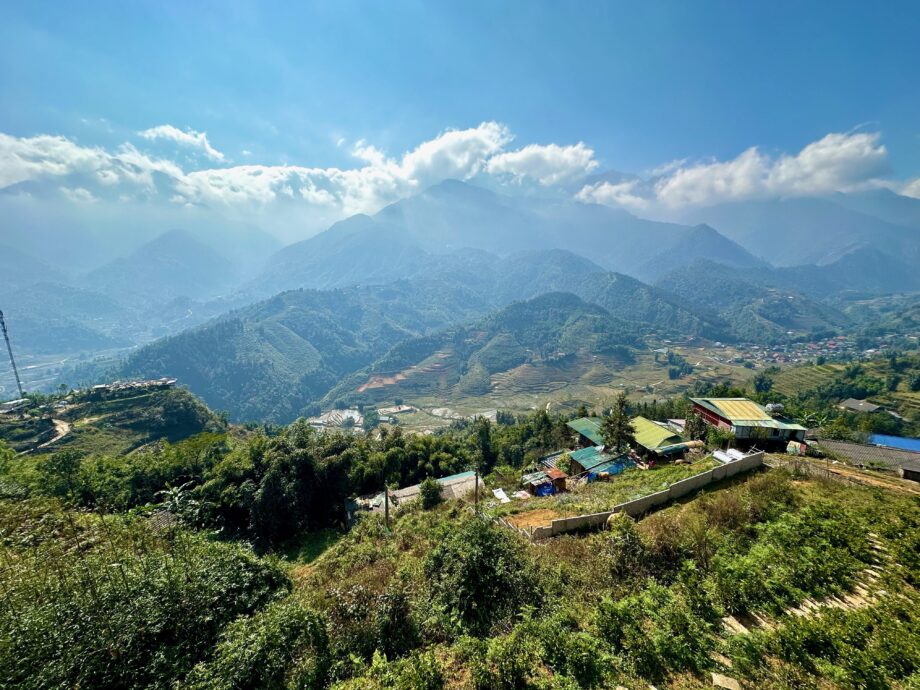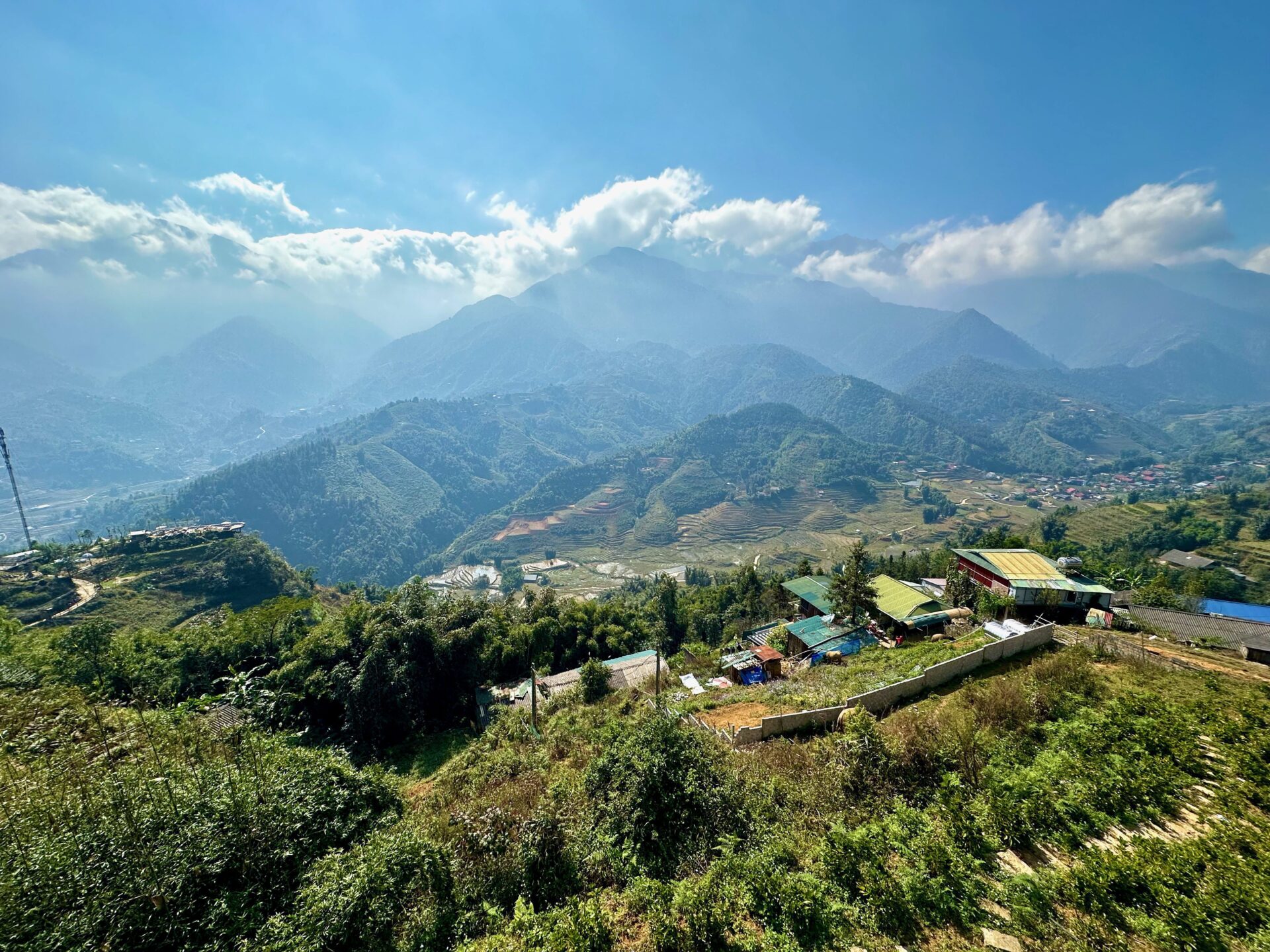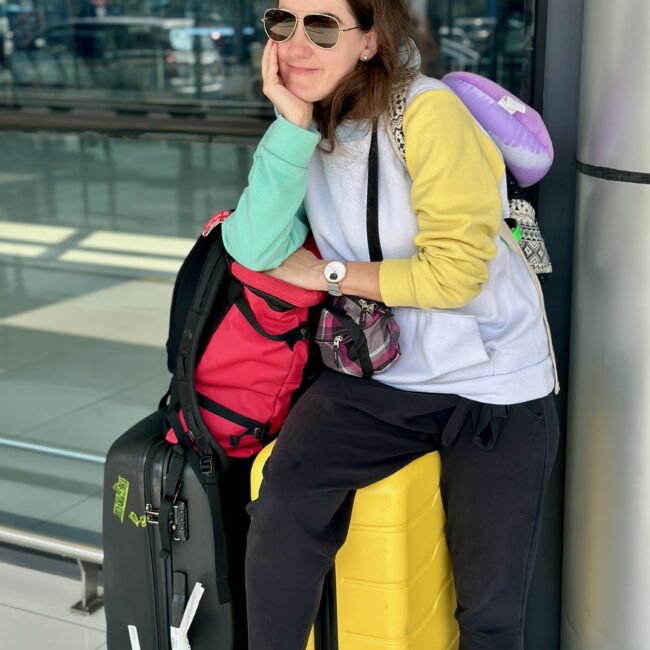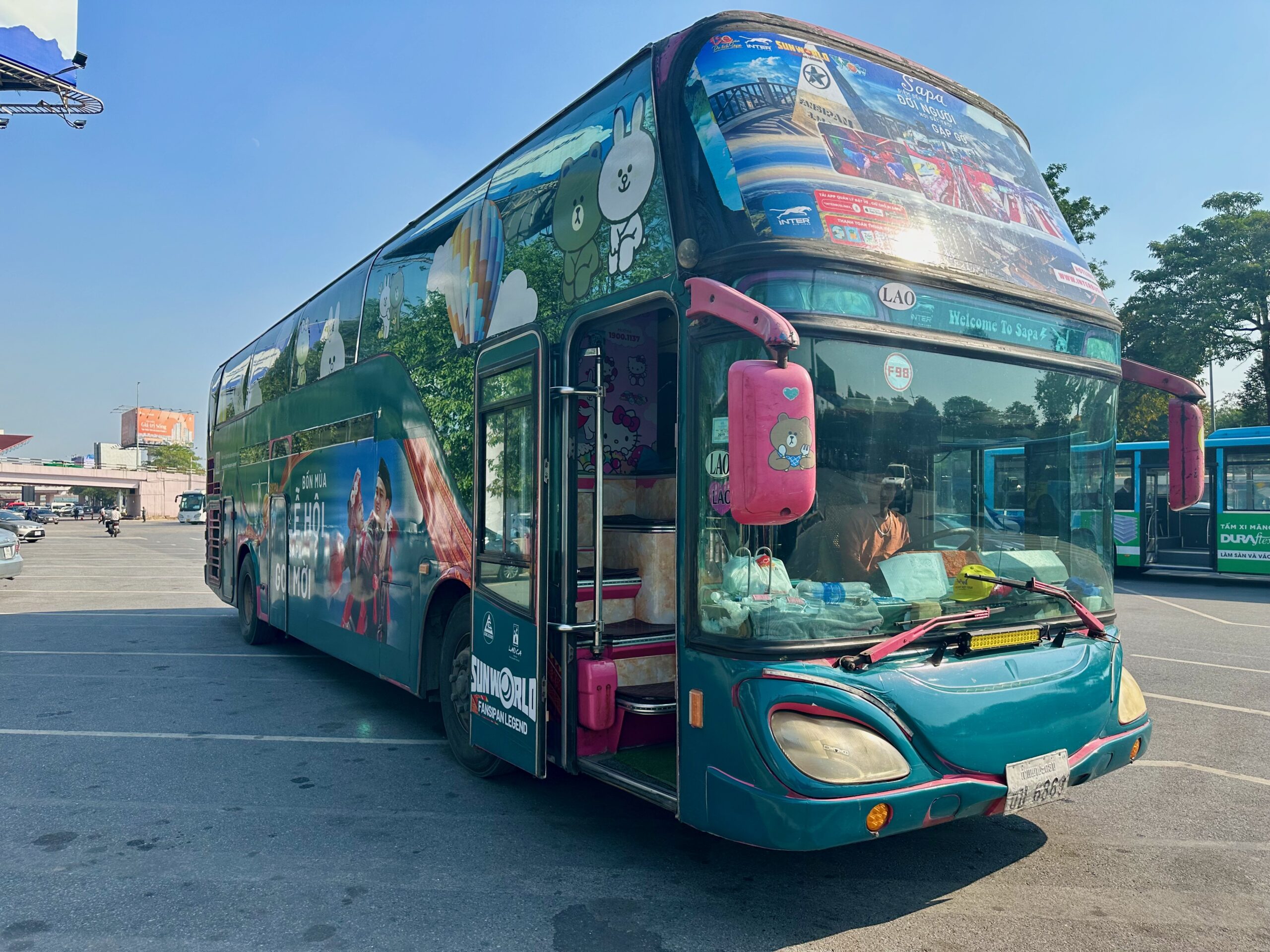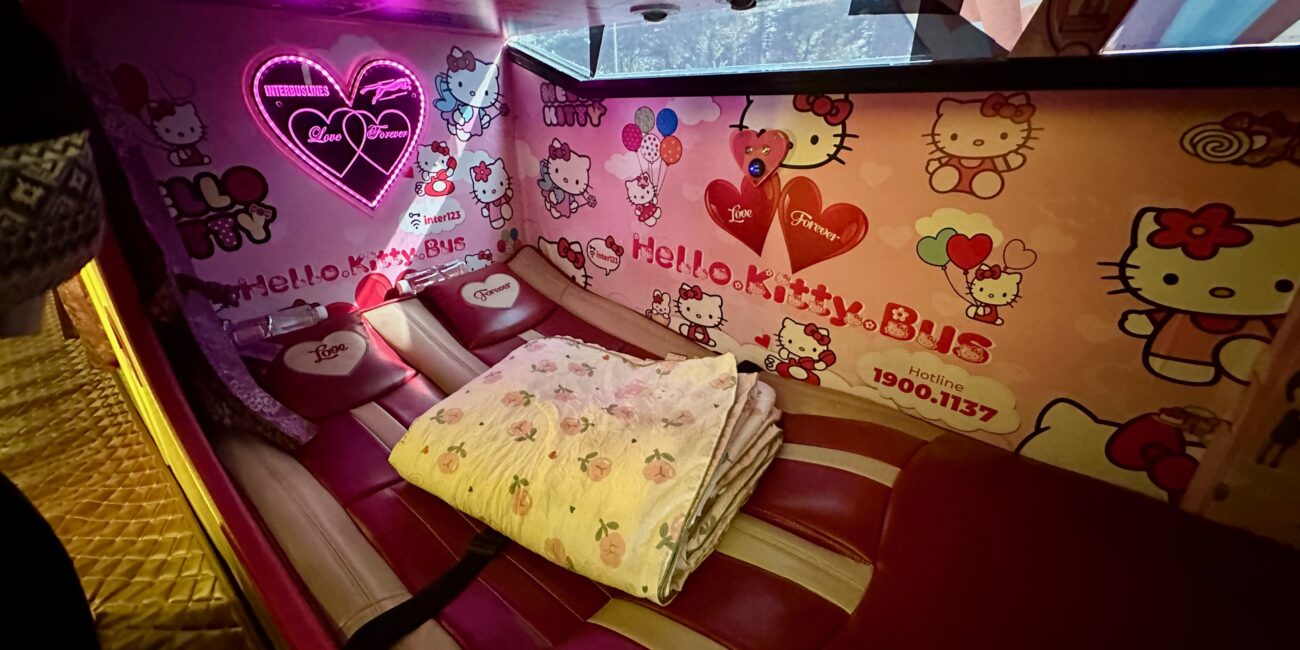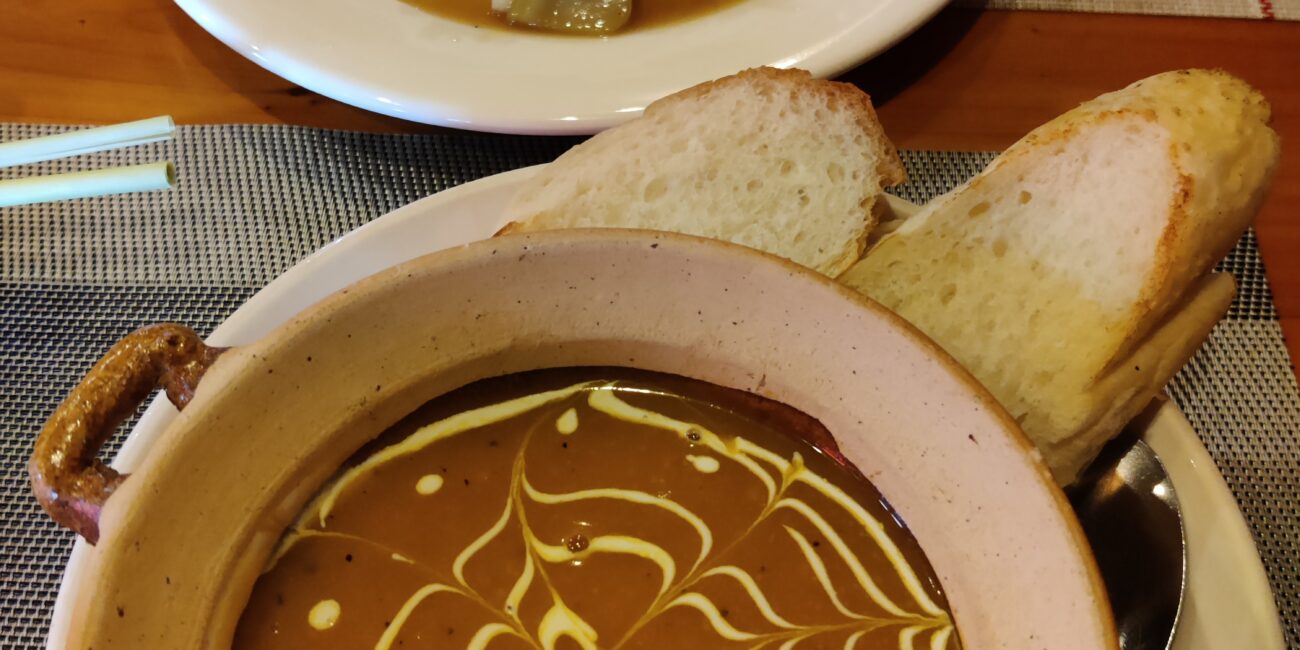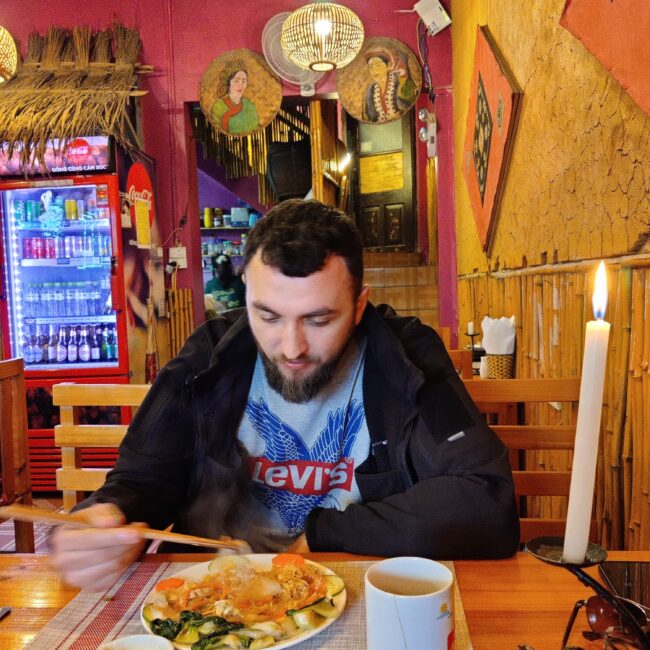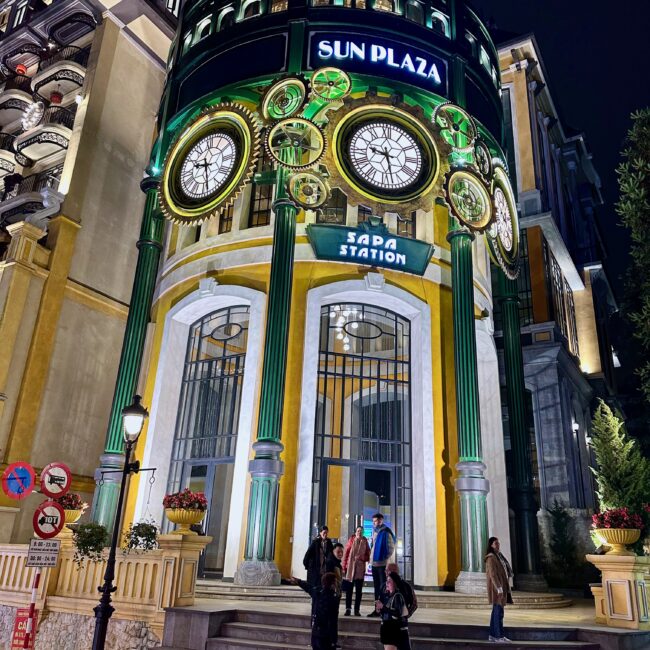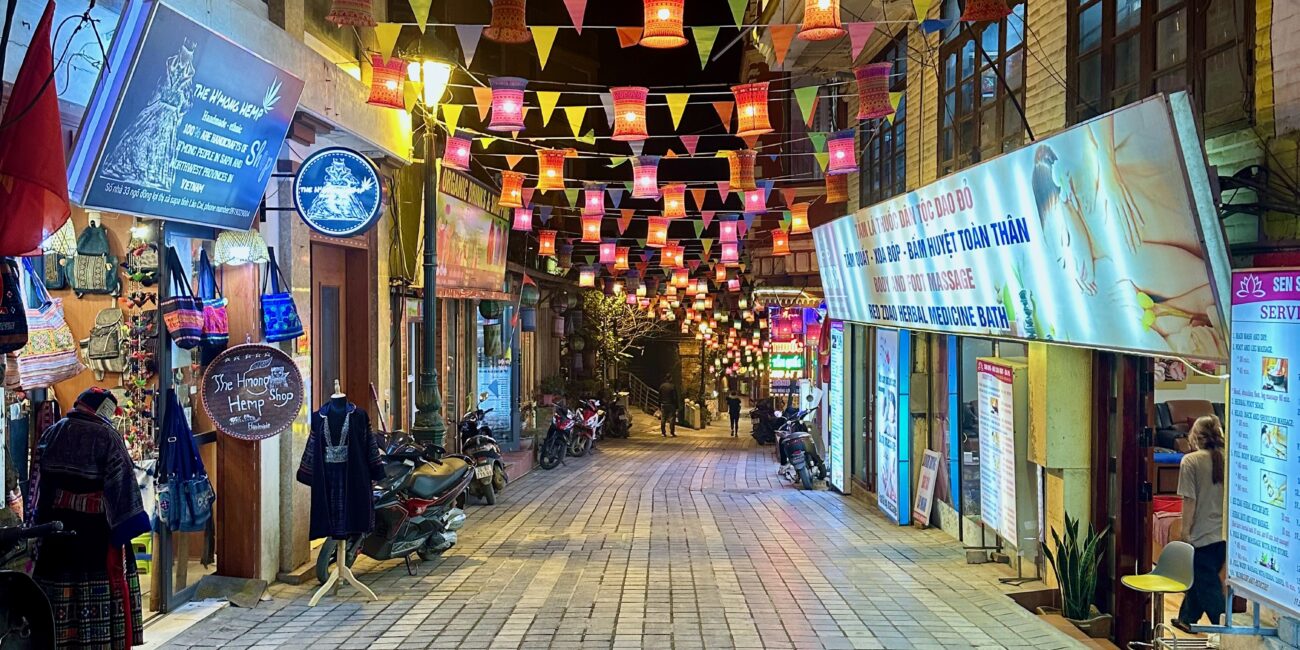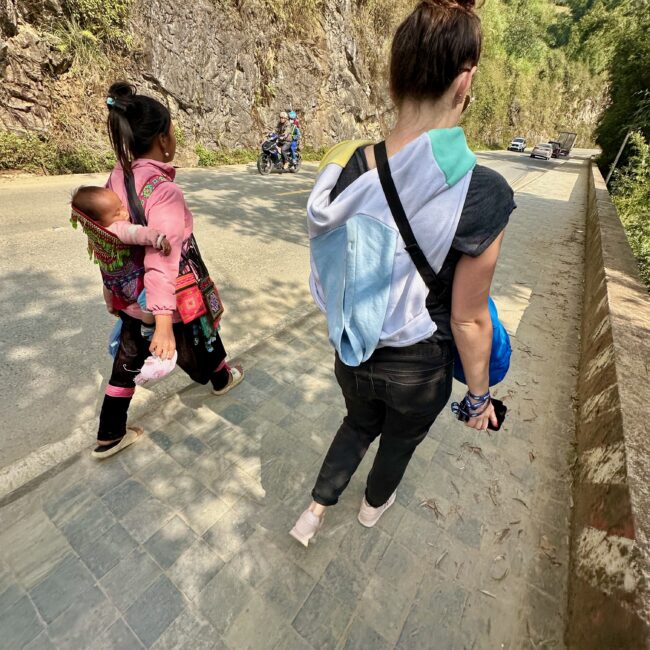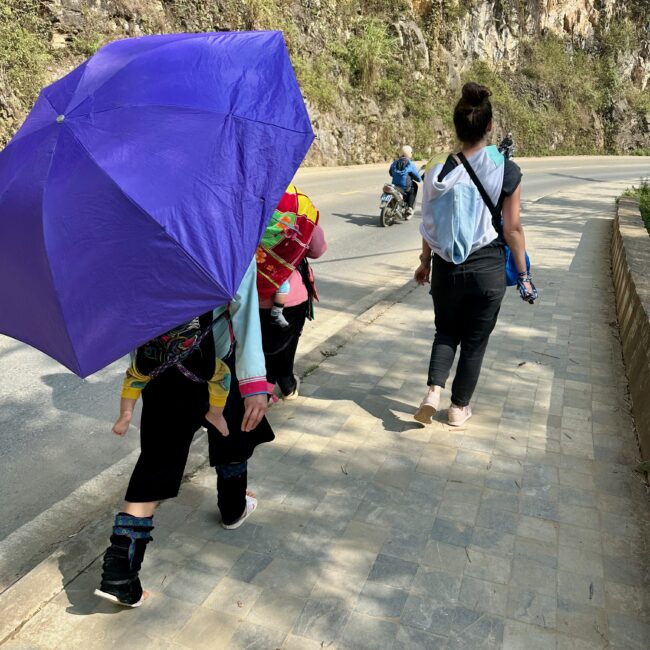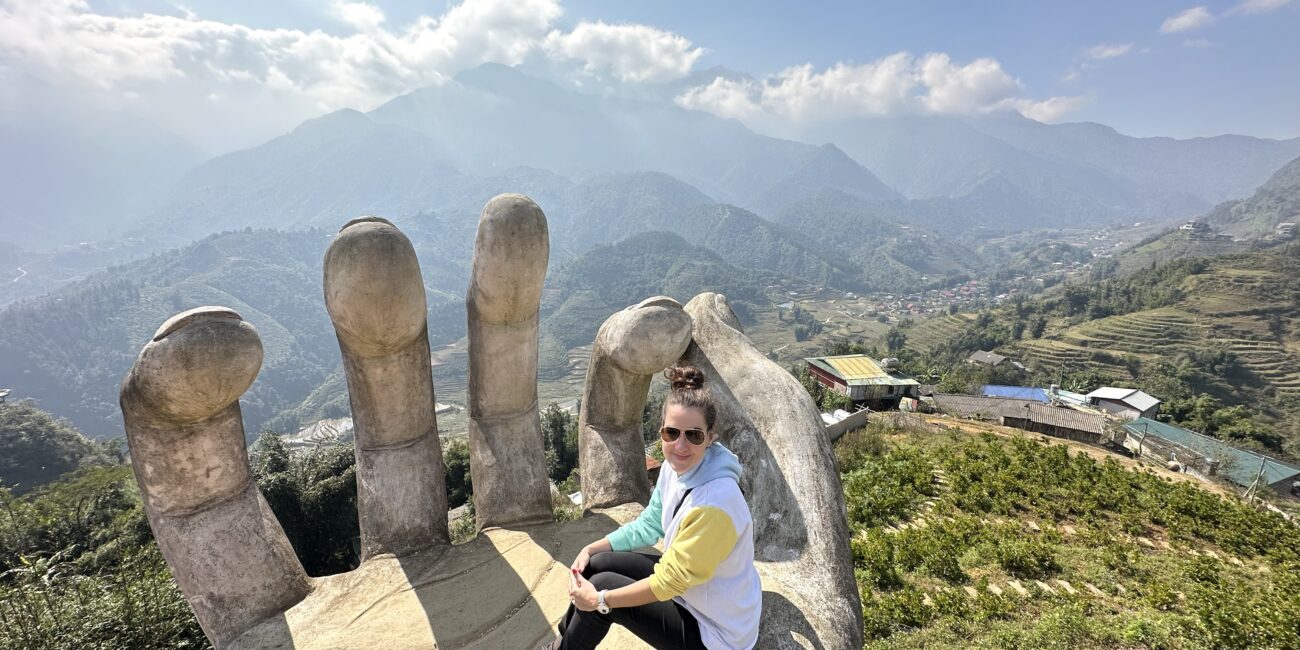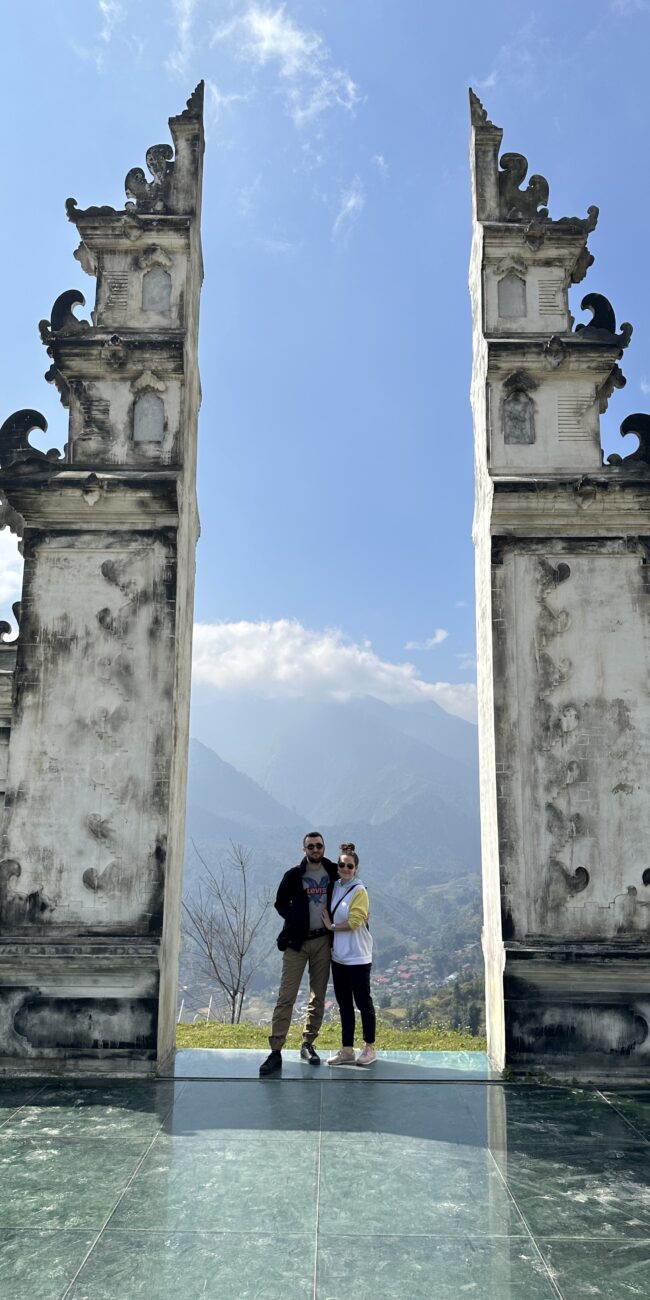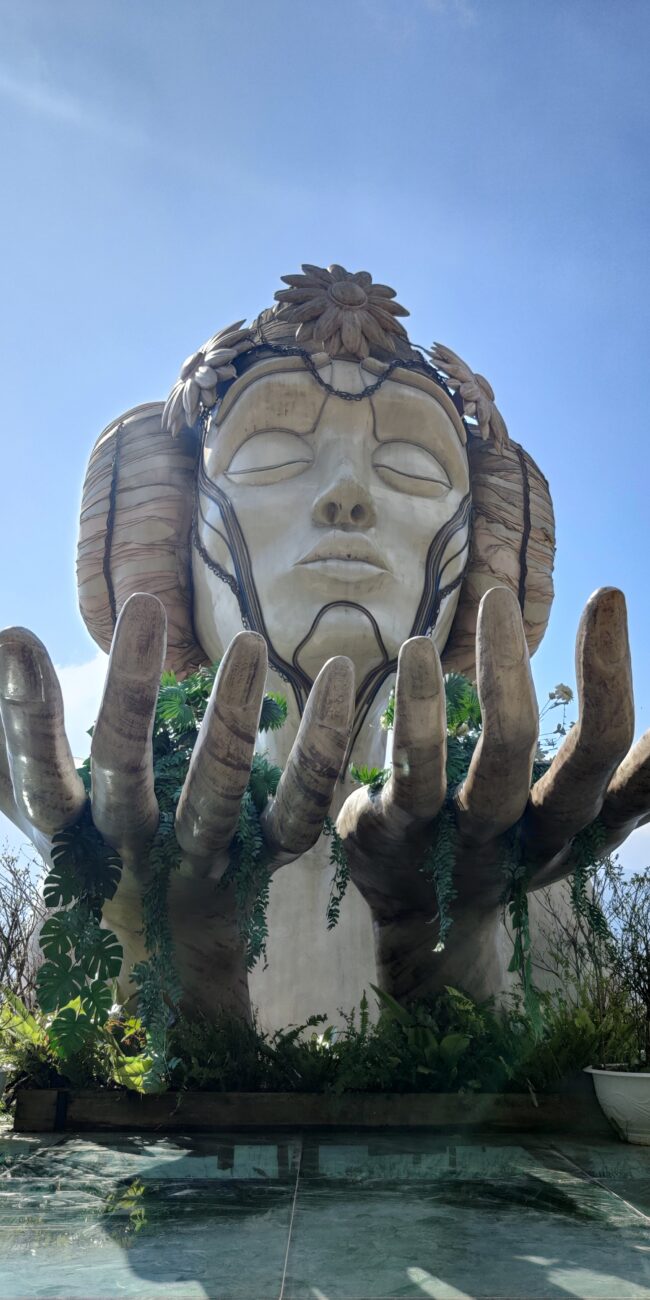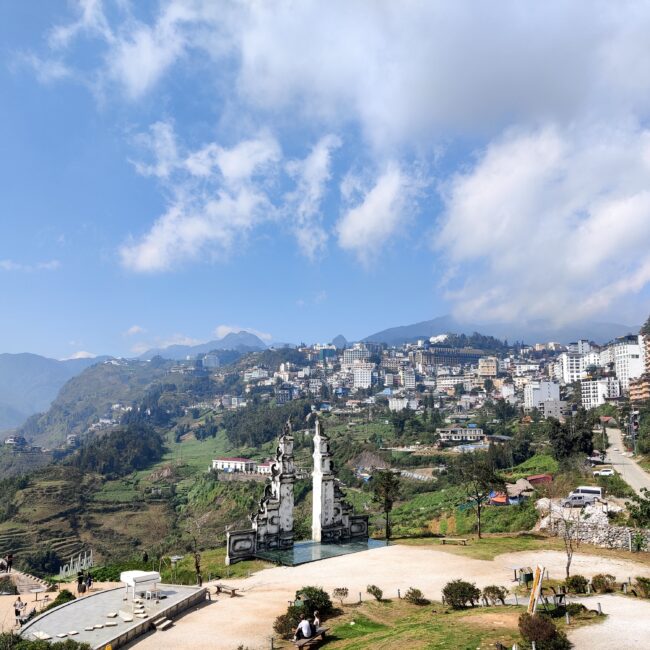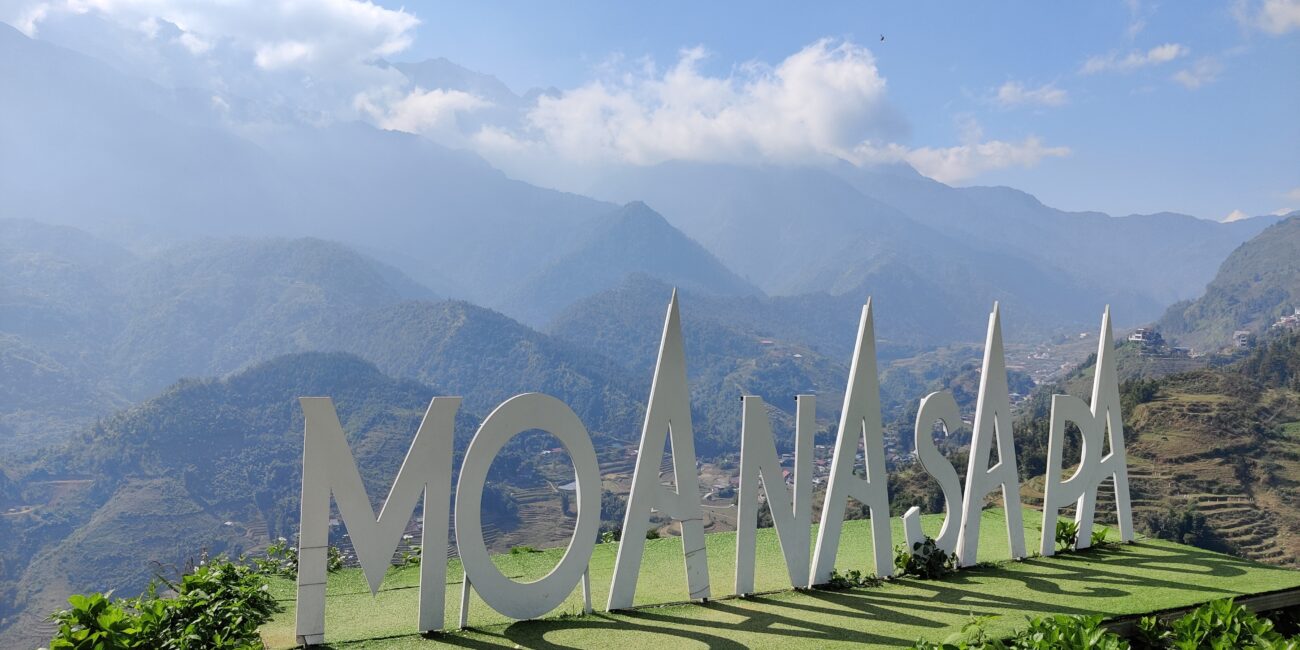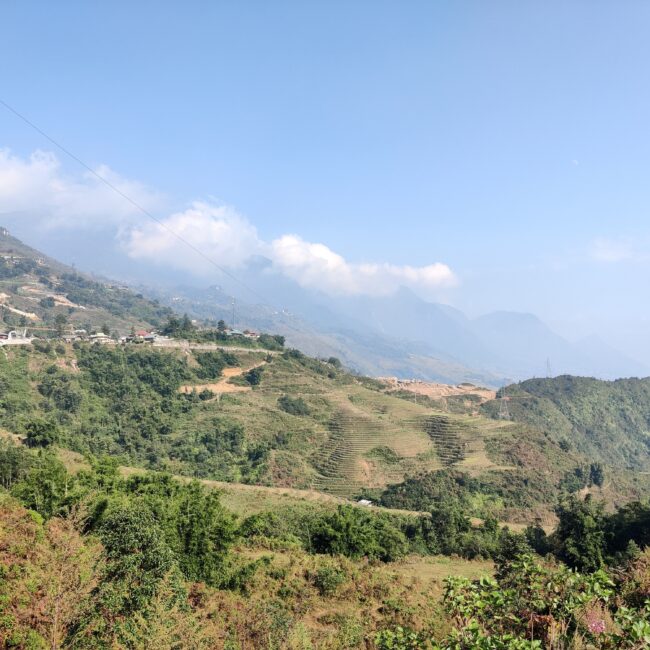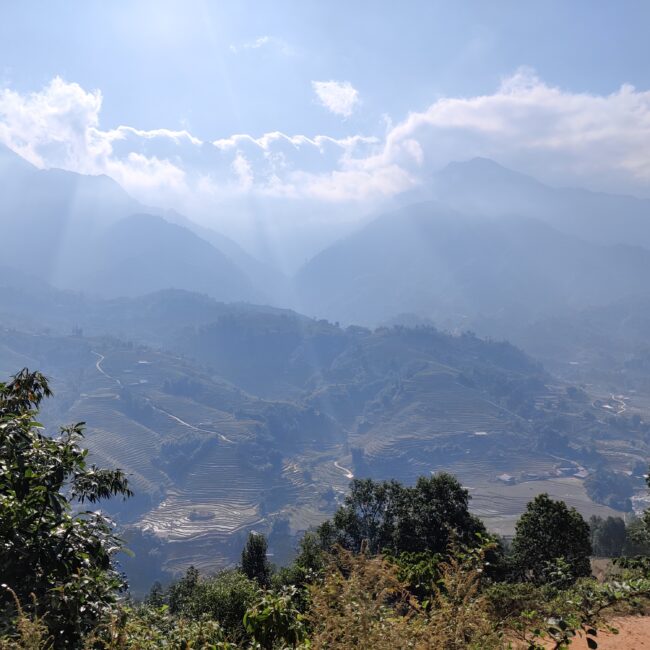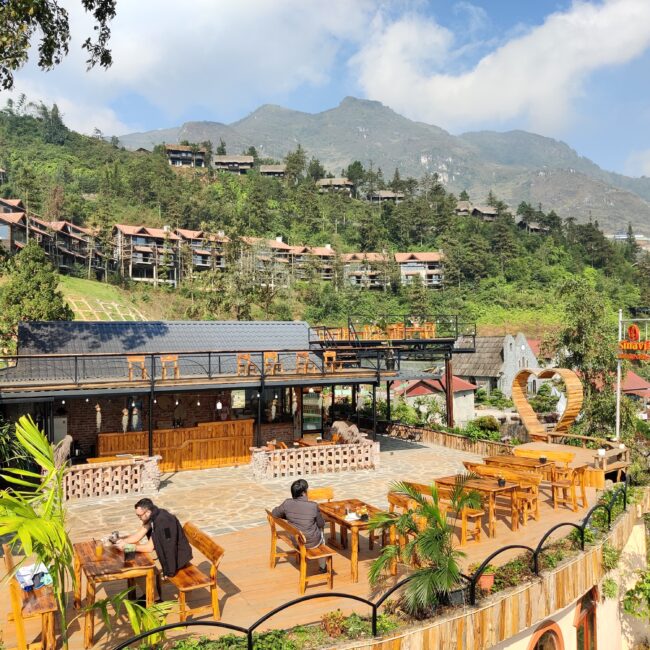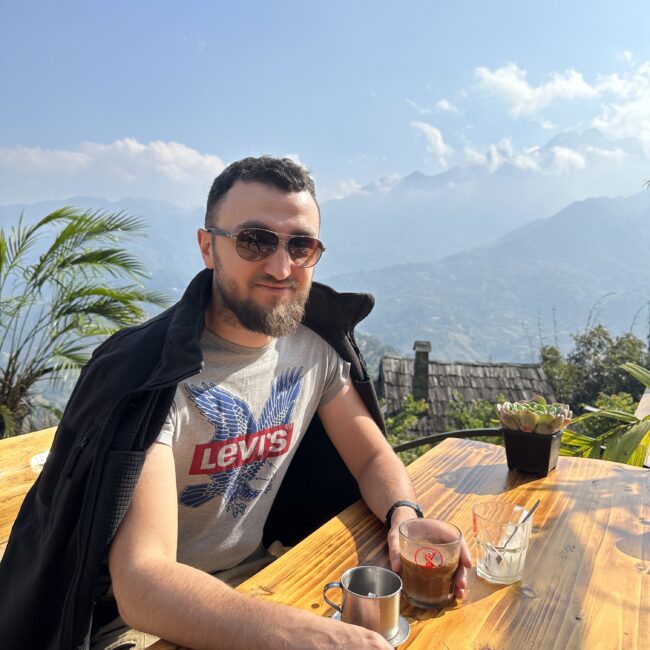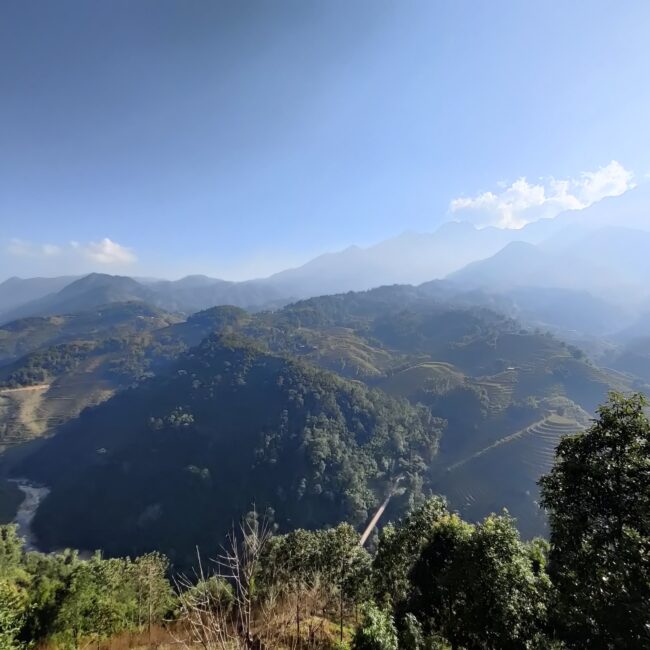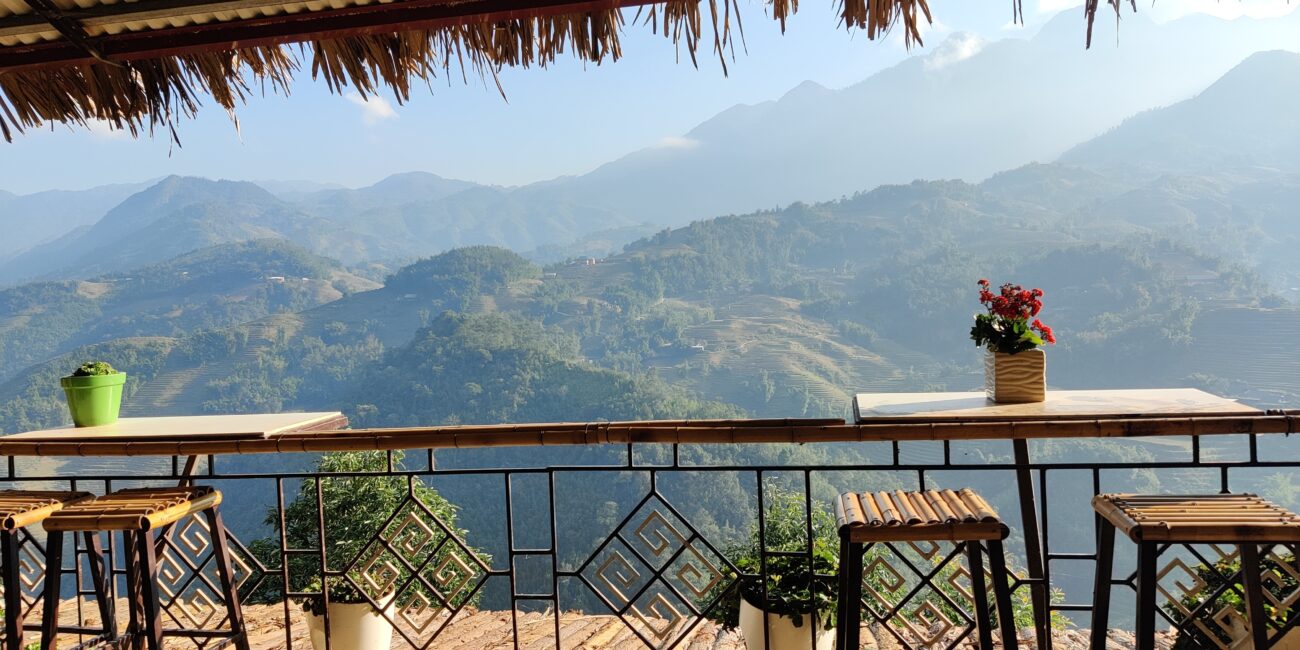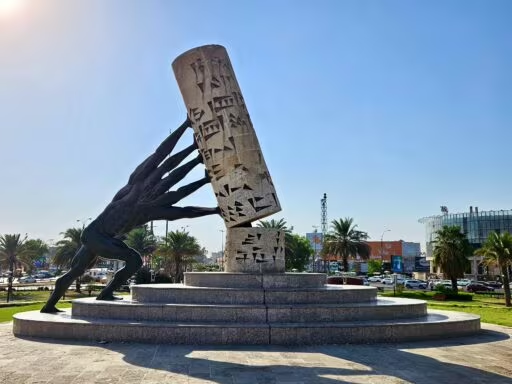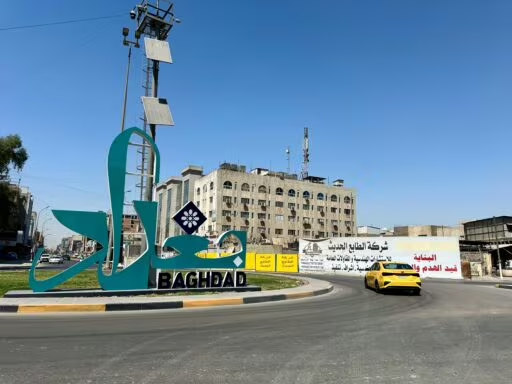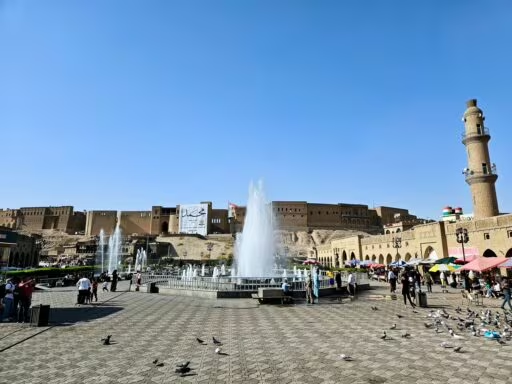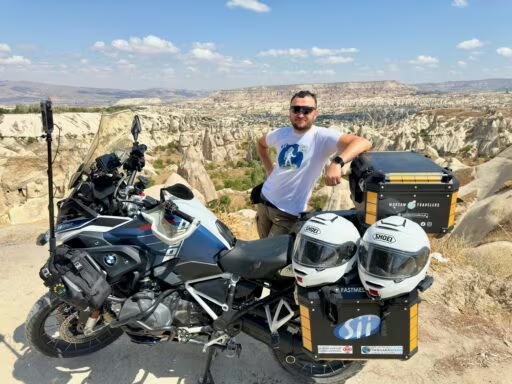This post is also available in:
Polski
Hello! 👋
We arrived in Sa Pa, but unfortunately… not at full strength. Illness took a bit of a toll on me (thankfully, not COVID!), so we spent a lot of time in the hotel room, recuperating. Jadzia stayed with me in solidarity, so our sightseeing was quite limited.
Despite that, we managed to step outside for a little while, see a bit of the mountain town, and soak in its atmosphere.
In this article, we’ll share our impressions and also talk about what we managed to see, despite the unfavorable circumstances.
If you haven’t yet read the earlier parts of our coverage, be sure to take a look:
- 👉 Ho Chi Minh City – our first stop
- 👉 Da Lat – the city of eternal spring
- 👉 Da Nang – coastal climate and windy beaches
And now it’s time for Sa Pa!
Where is Sa Pa located?
Sa Pa is a town located in the northwest of Vietnam, in the Lào Cai province, near the border with China. Situated at an altitude of about 1,650 meters above sea level in the Hoàng Liên Sơn mountain range, it is surrounded by impressive peaks, including the highest in Vietnam—Fansipan, known as the “Roof of Indochina”, rising to 3,143 meters above sea level.
This region is characterized by a cooler climate compared to the rest of the country, with mild and rainy summers and cool, misty winters. As a result, Sa Pa offers a refreshing break from the tropical heat that dominates most of Vietnam.
Sa Pa is also known for its ethnic diversity; it is home to groups such as the Hmong, Dao, Tay, and Giay, who maintain their unique traditions and cultures. Their presence contributes to the rich cultural heritage of the region, making it an attractive destination for tourists seeking authentic experiences.
With its landscapes, terraced rice fields, and rich culture, Sa Pa has become a popular destination for nature lovers and trekking enthusiasts, offering experiences far from the hustle and bustle of city life.
Departing from Da Nang for Sa Pa
We had quite a long journey ahead, so we decided to split the trip into two stages—first, a flight to Hanoi, and then a sleeper bus ride to Sa Pa.
🛫 Airport
We decided to fly from Da Nang to Hanoi with Vietravel Airlines. The flight seemed like the most convenient option, especially since we wanted to save time and avoid the long bus or train ride.
We checked in our luggage without any issues, although we were met with a bit of a surprise—the baggage receipt indicated that our luggage was oversized. This caught us off guard, as the suitcases were of standard size. We felt it was probably a way to limit liability in case of any damage during transport.
In such situations, it’s definitely worth taking photos of your luggage before checking it in—for your own peace of mind and as potential evidence in case of a claim.
Da Nang Airport (DAD) turned out to be small, but sufficient for domestic flights. The security check was smooth, and the flight took off on time.
After a short flight, we landed at Hanoi Airport, picked up our luggage (no damage, phew!), and were ready for the next part of the journey—this time, a sleeper bus to Sa Pa. 🚍
🚌 Riding in a sleeper bus
And that’s where the real adventure began—our overnight journey on an Interlines sleeper bus. Right from the start, we were quite surprised because the vehicle was… completely Hello Kitty-themed. 😂 Hearts, pink patterns, and decorations—it looked more like a mobile playground than a bus for a long journey.
I won’t hide it, it did make us laugh a bit, but curiosity won out—we boarded this pink madness. Unfortunately, the first impression faded as soon as we took our seats. The bus felt quite old, and its “sleeping” section looked like a hastily refurbished version of old seats.
Our spot? The lower level, with a mattress meant for two people. Sounds nice, right? Only in theory—the mattress had a distinct smell that definitely didn’t resemble freshness. 🫠
Views? Well, the views would probably have been beautiful if we could actually see them. The window we had was so small that you could easily miss it. A bit of a shame, as the route passes through picturesque areas, and all we could admire was… the ceiling.
The driver? He didn’t speak any English, so we communicated mostly with gestures. Thankfully, the journey went smoothly, although at times the road was quite winding and bumpy.
🚏 We reached Sa Pa
After the sleeper bus ride, we finally arrived in Sa Pa. Getting off at the bus stop? Let’s just say it could have been more comfortable. We were immediately surrounded by locals offering transportation, tours, and even accommodation.
Within two minutes, we were already surrounded by several people trying to convince us to take a ride—of course, “at a great price”. On top of that, children approaching with outstretched hands, asking for money, were an additional surprise and not the most pleasant sight to start with.
We were hoping to order a Grab or Gojek ride, as we had done in other places in Vietnam. To our surprise, we found out that the apps hardly worked here. 😬
Seeing that the situation was becoming more and more persistent, we eventually decided to… well, we’ll get to that in a moment.
First impression? Well, we won’t hide it—it was pretty average. But we hoped that after a bit of rest, we’d see Sa Pa in a more positive light.
How to get to Sa Pa?
🚗 By car or 🏍️ By motorcycle
Sa Pa is located about 320 km northwest of Hanoi. The most popular route is via the modern CT05 highway (Noi Bai – Lao Cai Expressway), which significantly shortens travel time. The drive typically takes about 5 to 5.5 hours, depending on road conditions and the number of stops.
Although the CT05 highway is in good condition, the final stretch to Sa Pa consists of winding and steep mountain roads. Weather conditions can change rapidly, especially in mountainous areas, so it’s a good idea to check the weather forecast before setting off. Be cautious on the roads, particularly if you’re not used to the Vietnamese driving style.
🚆 By train
Trains do not go directly to Sa Pa. The nearest train station is in Lào Cai, about 38 km from Sa Pa. The journey from Hanoi to Lào Cai typically takes 7 to 8 hours, and then you need to take a bus, taxi, or private transfer to reach Sa Pa.
There are both standard trains and luxury sleeper cars on this route, which offer more comfortable travel.
🚌 By bus
Traveling by bus to Sa Pa is one of the most convenient options, especially for those who want to avoid transfers. Direct connections from Hanoi make it a popular choice among tourists.
Carriers offering connections to Sapa
- Interlines – We used this option for our journey to Sa Pa. The buses were average in terms of standard—older vehicles with few amenities. In our case, there was no toilet on board, and the mattresses for sleeping left a lot to be desired.
- Sao Viet – We highly recommend this carrier, which we used on our way back to Hanoi. The buses are modern, equipped with toilets, comfortable sleeper seats, and air conditioning. The drivers are tested with a breathalyzer before the trip, which adds a sense of safety.
- Sapa Express – Popular among tourists. The buses are comfortable, and the carrier offers direct connections from Hanoi. The prices are reasonable, and the service standard is well-rated in reviews.
- Good Morning Sapa – Another option frequently used by tourists. The company is known for good reviews, sleeper buses, and regular departures.
Cost and travel time
- Ticket prices: They start at $15-30 depending on the class of bus.
- Transit time: An average of 5.5 to 6 hours, depending on road conditions.
✈️ By Airplane
There is no direct airport in Sa Pa – the nearest is in Hanoi (Nội Bài Airport – HAN).
If you want to reach Sa Pa by plane, you must first arrive in Hanoi and then continue your journey, for example, by sleeper bus.
Traffic conditions
We didn’t have the chance to thoroughly test the local roads as drivers, but from the perspective of pedestrians, we managed to notice a few important things to keep in mind.
🛵 Renting a scooter
Renting a scooter in Sa Pa can be a great idea for exploring the area, but it’s worth carefully considering this decision. The roads in this region are mountainous, winding, and sometimes in poor condition—especially after rain, when they get slippery. For experienced riders, it’s an interesting challenge, but for those just starting their journey with two-wheelers, it can be a bit stressful.
In the center of Sapa you will easily find scooter rentals. We saw several outlets that even had good reviews.
It’s always a good idea to thoroughly check the condition of the scooter before signing the agreement. Look at the brakes, lights, horn, and tires—these are essential. We always take photos of the vehicle before departing to avoid any misunderstandings when returning it. If something looks suspicious, it’s better to report it right away.
Importantly, never, ever leave your passport as a deposit. It’s a practice you should not agree to. If the rental shop insists, it’s better to leave a cash deposit or a photocopy of the document. It’s a good idea to ask about this before renting, to avoid any unpleasant situations.
Remember to also prioritize safety. In Vietnam, an international driving permit (IDP) compliant with the 1968 Vienna Convention is required. Without this document, your insurance may not be valid in the event of an accident, and in case of a collision, you will be automatically considered at fault.
🚦 Traffic reality
The center of Sa Pa is characterized by narrow, winding streets that often become crowded, especially during the tourist season. Main roads can get congested, making it difficult for both pedestrians and drivers to move around. Additionally, the presence of numerous motorcycles and scooters, typical of Vietnamese cities, increases the intensity of traffic.
Although many streets are paved, it doesn’t always mean a comfortable ride. Often, a layer of clay or mud remains on the asphalt, especially after rainfall, which can lead to slips, particularly for less experienced motorcyclists. It’s also important to remember that in mountainous areas like Sa Pa, the roads can be steep and challenging.
Motorcyclists and cyclists often ride against traffic, and pedestrians must be prepared for rapidly changing situations on the road. Therefore, it’s recommended to exercise extra caution while walking around the city and to avoid using vehicles without the proper experience.
Due to the slippery surfaces, it’s a good idea to wear sturdy, slip-resistant shoes that will provide better traction during walks.
If you plan to rent a scooter, make sure you have the appropriate experience in handling a vehicle in challenging conditions. Alternatively, consider using local taxis or joining organized tours.
Always be aware of your surroundings and anticipate the unexpected behavior of other traffic participants.
Public transport
🚍 Public transportation
Sa Pa does not have a developed public transportation network in the traditional sense. There are no regular bus lines serving the town and its surroundings. As a result, tourists and locals rely on alternative means of transportation to get around the region.
🚖 Passenger transportation
In the center of Sa Pa, it’s easy to find taxis and motorbike taxis (xe ôm) offering rides for short distances. Before starting your journey, it’s a good idea to agree on the price or ensure the meter is turned on. Although local drivers may initially offer higher rates, it’s usually possible to come to an agreement and get a price close to what is offered by ride-hailing apps.
Numerous travel agencies offer car rentals with a driver or organize transportation to popular destinations in the region. This is a convenient option for groups and individuals who prefer organized transport.
Although the Grab app is popular in many Vietnamese cities, its functionality is limited in Sa Pa. While it is technically possible to place an order through the app, in practice, there are few available drivers in the area. This may be due to local conditions or informal agreements between drivers.
Negotiating is a common practice in Vietnam. Be polite and patient when agreeing on a price with the driver. Make sure you have enough cash in the local currency, as card payments are rarely accepted.
Accommodation
Our stay at My Gallery Boutique Hotel and Spa left us with rather mixed feelings. At first glance, the hotel looked quite good—stylish decor, cleanliness, and a cozy atmosphere. However, when it came to comfort, we began to encounter some issues.
The first thing that surprised us was the temperature in the room. Without the air conditioning on, it could get really cold—well, that’s the charm of a mountain region. The climate in Sa Pa is unique, and it can get quite chilly at night.
Internet was another issue—unfortunately, the signal was very weak, and the speed was slow. If you plan to work remotely or just stay up to date with the news, you might encounter some problems.
The hotel staff communicated in English at a very basic level, which wasn’t much of a surprise. However, the attempt to “accidentally” convert the payment at unfavorable rates was. The employee tried to charge us an additional 10 PLN, but when we showed him the actual amount from our Booking reservation, he backed off. It’s hard to say whether it was a mistake or a deliberate action, but the unpleasant feeling remained.
We found the breakfasts to be very basic—not something that would impress food enthusiasts. On the other hand, at checkout, the hotel gave us some provisions for the road, which was a nice gesture and partially eased the earlier shortcomings.
Food
In Sa Pa, the food was really diverse, and everyone could find something to suit their taste—both local dishes and more Western flavors.
It’s worth preparing for some surprises when it comes to payments. Some restaurants added a 2–3% commission for card payments. Is this legal? It’s hard to say, but we didn’t encounter this anywhere else during our travels in Vietnam. This is definitely a red flag to keep in mind when planning meals in the area. If you want to avoid extra charges, cash will be a safer option.
Sa Pa is famous for its cuisine, which reflects the region’s mountainous character and ethnic minority influences such as the H’mong and Dao. Dishes featuring pork, chicken, and various types of grilled meats and vegetables dominate the local food scene.
Exchange office or ATM?
We had prepared cash for our stay in Sa Pa in advance, which turned out to be a very good idea. The number of ATMs in the town is limited, and the ones that are available charge a commission—sometimes quite a high one.
Some of the ATMs didn’t look very reassuring in terms of security. Worried about card cloning, we decided not to take the risk and would recommend the same to you—it’s better to withdraw the necessary cash earlier, for example, in Hanoi or another larger town.
Currency exchange offices? There are very few in Sa Pa, and the exchange rates can be unfavorable. Therefore, it’s a good idea to prepare local currency in advance.
Climate and weather conditions
Sa Pa is known for its mountain climate, which is significantly different from the weather in other parts of Vietnam. Located at an altitude of about 1,500 meters above sea level, the town offers cooler temperatures year-round. In the summer, temperatures range from 20 to 25°C, making it an ideal place to escape the heat that prevails in the lowlands.
In winter, temperatures can drop below 10°C, and in some years, snowfall has occurred—which is a rare phenomenon in Vietnam. During our stay, it was cold and windy. The warm clothes we brought with us turned out to be essential.
The weather in Sa Pa is quite unpredictable—it can change within a few hours. Mornings are often cool and foggy, while the sun may come out during the day, only for fog or rain to return in the evening. Rain is common in the autumn and spring, and fog can reduce visibility, which is important to consider when planning mountain trips.
We definitely recommend bringing a rain jacket, warm clothes, and good hiking footwear, especially if you plan to walk along the surrounding trails.
Safety
As in many tourist destinations, it’s important to stay alert and be aware of certain safety challenges.
Intrusive vendors and beggars
While walking around Sa Pa, you may encounter locals, often women with children, offering handmade crafts or asking for financial support. Their approach can be persistent; they may follow tourists for longer distances, hoping for a sale or donation. In such situations, it’s recommended to firmly decline and continue your walk. Avoiding eye contact and consistently ignoring requests can also help discourage persistent individuals.
Traffic and infrastructure
The road infrastructure in Sa Pa is limited, and sidewalks are often inaccessible or obstructed. Local scooter and car drivers may not always pay attention to pedestrians, which increases the risk of accidents. It is advised to exercise extra caution when moving around the streets, especially after dark. Wearing reflective clothing or using a flashlight can improve visibility and safety.
Thefts and frauds
Although Vietnam is generally considered a safe country for tourists, there are occasional instances of petty theft, especially in areas with heavy tourist traffic. It’s important to secure your personal belongings, avoid carrying large sums of money, and use hotel safes. Additionally, before hiring guides or purchasing souvenirs, it’s a good idea to confirm prices and the authenticity of the products to avoid potential scams.
- Avoid walking alone after dark: If possible, move around in a group or use trusted forms of transportation.
- Be aware of your surroundings: Pay attention to what’s happening around you and avoid situations that may seem suspicious.
- Use recommended services: Choose trusted restaurants, hotels, and guides to minimize the risk of unpleasant experiences.
Places we were able to see
Despite the limited time and my poor health condition, we managed to step out around the hotel and visit a few places on our list. They may not have been long outings, but they allowed us to at least get a feel for the atmosphere of the place and its surroundings.
Mona Sapa
Moana Sapa, known as the “little Bali” in the heart of Sa Pa, is a popular spot for photography lovers and those seeking beautiful landscapes. Located just 500 meters from the city center, it offers a variety of attractions, including the Bali gate, the Moana girl statue, the infinity lake, the golden hand, a swing over the abyss, and a solitary tree.
It’s worth noting, however, that you can’t pay for entry with a card here. Therefore, it’s recommended to bring enough cash to cover the entrance fees.
Check-in point
This place is one of the most popular vantage points in Sapa, attracting tourists who want to admire the picturesque rice terraces stretching all the way to the horizon.
Huân Đậu Đậu Coffee & Homestay
This charming spot is definitely worth visiting during your stay in Sa Pa, especially if you need a moment to relax with a good coffee or tea. The atmosphere here is incredibly cozy—perfect for unwinding after walks around the area or exploring the rice terraces. 🌿
Although we didn’t stay here, we can wholeheartedly recommend this place as a stop for coffee. We went for the classic Vietnamese coffee with condensed milk—very tasty, although of course, it’s not an option for those avoiding lactose (in my case, a small sacrifice for new flavor experiences 😅).
Remember that you won’t pay by card here.
Nga Cảnh Best View Cafe
This is another spot on the map of Sa Pa that we really liked. As the name suggests, the views here are truly exceptional. It’s the perfect place to take a break during your walks around the area and enjoy the rice terraces. 🌄
We stopped here for a short break and decided to have some tea. It was quiet and peaceful, and the panoramas of the surrounding hills were mesmerizing – a perfect spot to relax and enjoy the views.
A big plus – you can pay by card here! Which, in Sa Pa, isn’t always a given.
We pack our bags and continue on our way
Our short stay in Sa Pa has come to an end—despite being sick, we managed to catch a few views that will definitely stay with us for a long time. But it’s time to move on. This time, the direction is Hanoi.
For the return trip, we chose Sao Viet, whose sleeper buses made a much better impression on us from the start compared to the one we took to Sa Pa. The ticket price also included transportation from the hotel to the company’s base in the city center—without any additional fees.
Sa Pa is a place that evokes mixed feelings. The views of the rice terraces are impressive—Jadzia particularly liked them, and I regretted that due to illness, we didn’t manage to see Fansipan, the highest peak in Vietnam. On the other hand, certain issues slightly spoiled the overall impression of the place.
The center itself resembled one big carnival of lights, neon signs, and tacky items. The shops were filled with counterfeit products from well-known brands. If someone doesn’t mind this kitschy atmosphere, they might even enjoy it here. However, we preferred to escape to the outskirts, where we could breathe fresh air and enjoy a calmer vibe.

